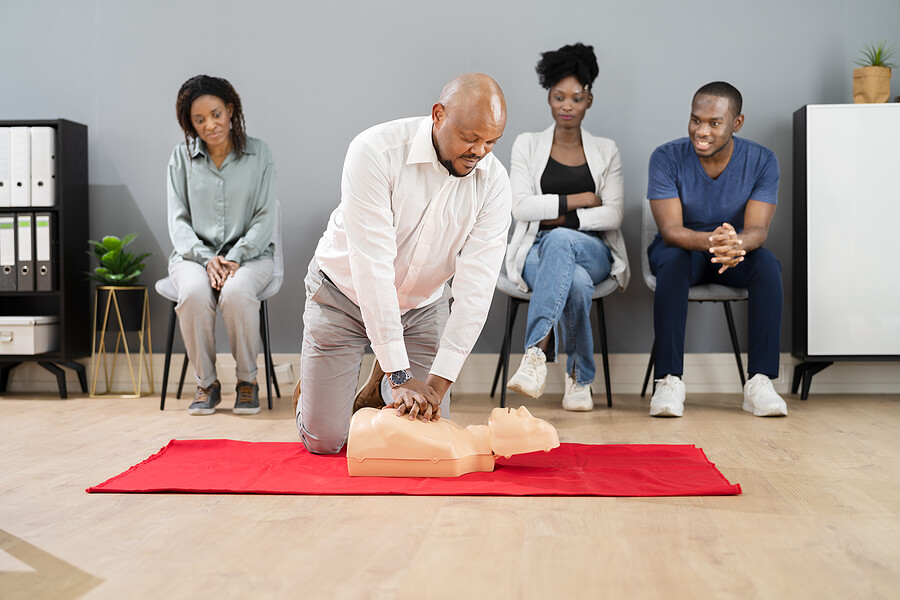No matter what type of office you work in, workplace safety is essential. OSHA cites that in 2019, there were around 15 worker deaths in America per day. While every workplace has hazards, the right training and mitigation strategies can help reduce the risk of serious accidents, injuries, and fatalities. Office safety managers can create a safety plan that lays the foundation for a safe, productive work environment.
Top Office Safety Tips
There are lots of health and safety tips for employees and managers alike to keep in mind. But, what is a manager’s responsibility for office safety? As an office safety manager, it is up to you to lead the charge for a safer workplace. You set the tone for company culture around safety and help team members stay informed, engaged, and safe.
The following guidelines can help you get started:
1. Assess your current workplace safety situation
Before you begin creating a new safety plan, take a look around your office––literally and metaphorically––to scope out any potential safety hazards. Here are a few questions to ask yourself:
- What kinds of equipment are workers using?
- Have there been any workplace injuries in the past? If so, what was the cause?
- What kinds of employee behaviors could create risks?
- What kinds of safety gear does the office currently have?
- Does the office have well-marked emergency exits?
- Is the office generally tidy?
- Are emergency exits clear?
Completing this analysis of your workplace will help you know what types of safety education to focus on, what kinds of equipment to invest in, and more. It’s a great way to set your team up for success!
2. Address any potential hazards
Now that you have a better understanding of the office’s current status, you’re well-poised to improve it. Did you notice any hazardous equipment in your survey? Did any concerning behaviors arise? Use these findings to guide your safety plan.
3. Prioritize training and education
In your role as an office safety manager, you’re responsible for making sure that all team members are informed and educated on safety best practices. If your team is aware of any potential hazards and how to handle them, they’re of course more likely to avoid them.
Setting up some training courses will teach your team good safety tips at work. Courses in basic first aid, cardiopulmonary resuscitation (CPR), bloodborne pathogens, managing assaultive behavior, and active shooter safety will give your team the resources it needs to stay safe.
4. Equip the workplace
In the event of a cardiac emergency, the last thing you want to do is realize your office is missing an AED. Having the right gear (and the right know-how to use it) is an important investment for any office safety plan.
Consider the day-to-day tasks happening at your office and select equipment accordingly. If your workplace includes heavy machinery, you’ll need protective gear, helmets, and sturdy footwear. If you’re dealing with hazardous substances, PPE is essential. All workplaces should have general safety items such as first aid kits and fire extinguishers.
Once your office is stocked up with the necessary safety gear, it’s important to educate your team on the location and proper usage of the equipment. Having a fire extinguisher on-site only gets you so far––if there’s a fire, it’s important to actually know where to find it and how to use it! Provide any necessary training relevant to PPE and other safety gear.
5. Create a culture of safety
Office safety truly is a team effort. In order to have the safest workplace possible, all workers and managers need to support each other. As an office safety manager navigating how to keep employees focused on safety, you can help make it a part of the daily conversation.
Encourage team members to participate in your safety plan and share any safety-related concerns or ideas they have. If employees feel comfortable speaking up when something seems unsafe, the more likely your company will be able to address the issue before an incident occurs. Frequent safety check-in’s––both informal conversations and formal training––will ensure everyone stays on the same page.
Learn CPR and First Aid With SureFire CPR
Ready to take your safety skills to the next level? Try health and safety courses for office managers! Training is an investment that has an incalculable ROI––your team’s health is invaluable.
SureFire CPR’s CPR, AED and Basic First Aid course covers essential workplace safety skills, such as how to administer CPR, how to perform basic first aid, proper AED usage, and how to assist unconscious and conscious choking victims. Should an incident occur in the office, this knowledge will help you keep your employees and coworkers safe until first responders arrive.
Our group CPR training courses are a great way to get the whole office CPR certified at once. We know that your company has a lot on its plate––that’s why we can bring the training to you with an in-office course that fits into your busy schedule. Get a custom quote on our SureFire CPR Group Training page. We also can help guide you with what types of first aid kits and lifesaving tools are needed for your team.
Contact Us
The team of experts here at SureFire CPR is here to help you make your office as safe as possible. Feel free to reach out and schedule your training today! Give us a call at (888) 277-3143 or use our online contact form.







